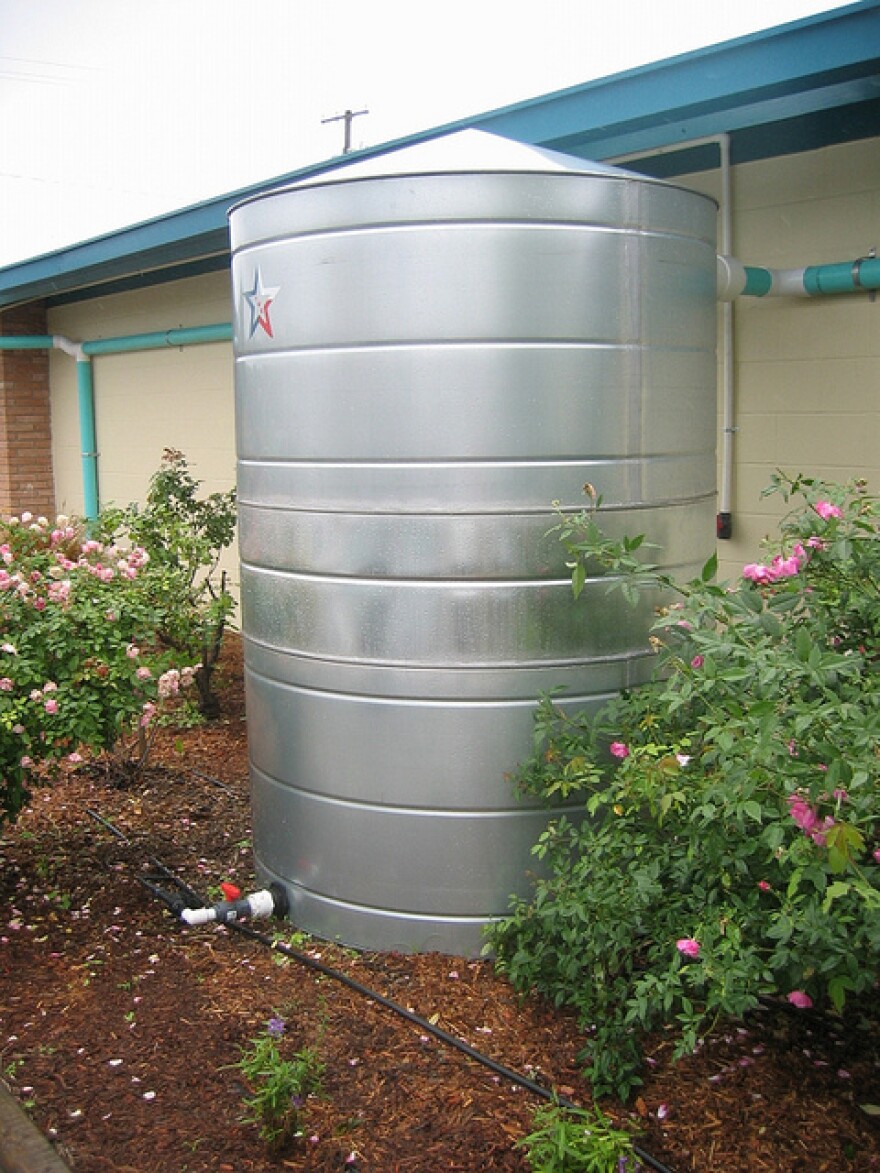Rain barrels and other rain catchment systems could soon be installed on state government buildings.
The rainwater harvesting bill made it through the Texas Legislature this week and is headed to the Governor’s desk. HB 3391 requires that future state buildings that are large enough must have rainwater harvesting systems incorporated in the buildings’ design and construction plans.
State Rep. Doug Miller (R-New Braunfels) authored the bill. It also allows for banks or “financial institutions” to consider lending developers, homeowners or businesses money for projects where rainwater will be the sole source of water supply.
Although there’s no state credit for people or businesses that use rainwater systems, the bill encourages cities and counties to offer incentives to install them. It also prohibits municipalities from denying someone a building permit based on the fact that the builder is using a rainwater system, unless it doesn't meet standards.
The City of Austin already has a rebate for Austin Water Utility customers or other water districts customers they approve. The rainwater system must be new or being added on to existing system for more water storage. Below are the rebate amounts:
Rebate Amount ≈≈$0.50 per gallon for non-pressurized systems not to exceed 50% of system cost. ≈≈$1.00 per gallon for pressurized systems not to exceed 50% of system cost. ≈≈Total maximum lifetime rebate amount of $5,000 per site. ≈≈Rebate covers materials and labor for dedicated system components including tank, pad, screens, filters, first-flush, and selected piping installation only, but does not include gutters, irrigation system components, or backflow preventers
The Hill Country Alliance applauding the bill. The non-profits promotes conservation of natural resources. In a press released about the rainwater harvesting bill, the Hill Country Alliance says installing a rainwater catchment system can be affordable.
Generally, professional installation for a basic rainwater system is about $1.25 per stored gallon, and less if you install it yourself. Adding the water purification system for potable use adds about $1,000 to the total cost
If this weren't Texas and if droughts weren't prominent, the amount of water people could conserve would be through the roof. (Get it!) Still some say its worth the conservation effort. If you want to learn more about rainwater harvesting, there's the Rainwater Revival conference in Dripping Springs you can attend. It's in October.


